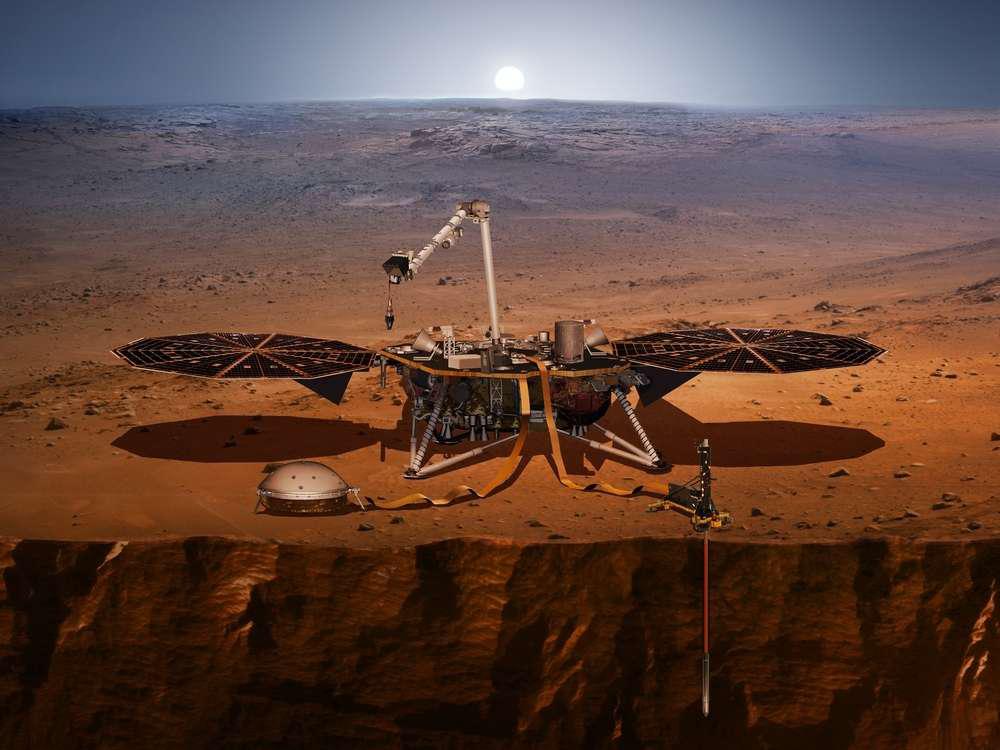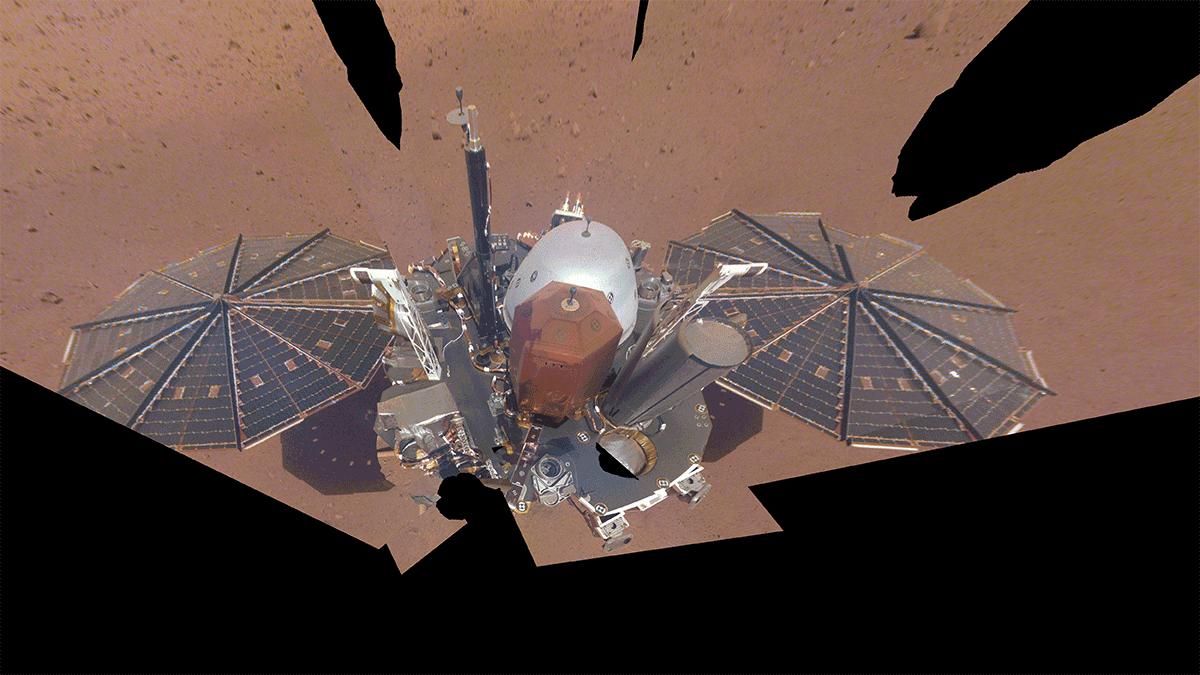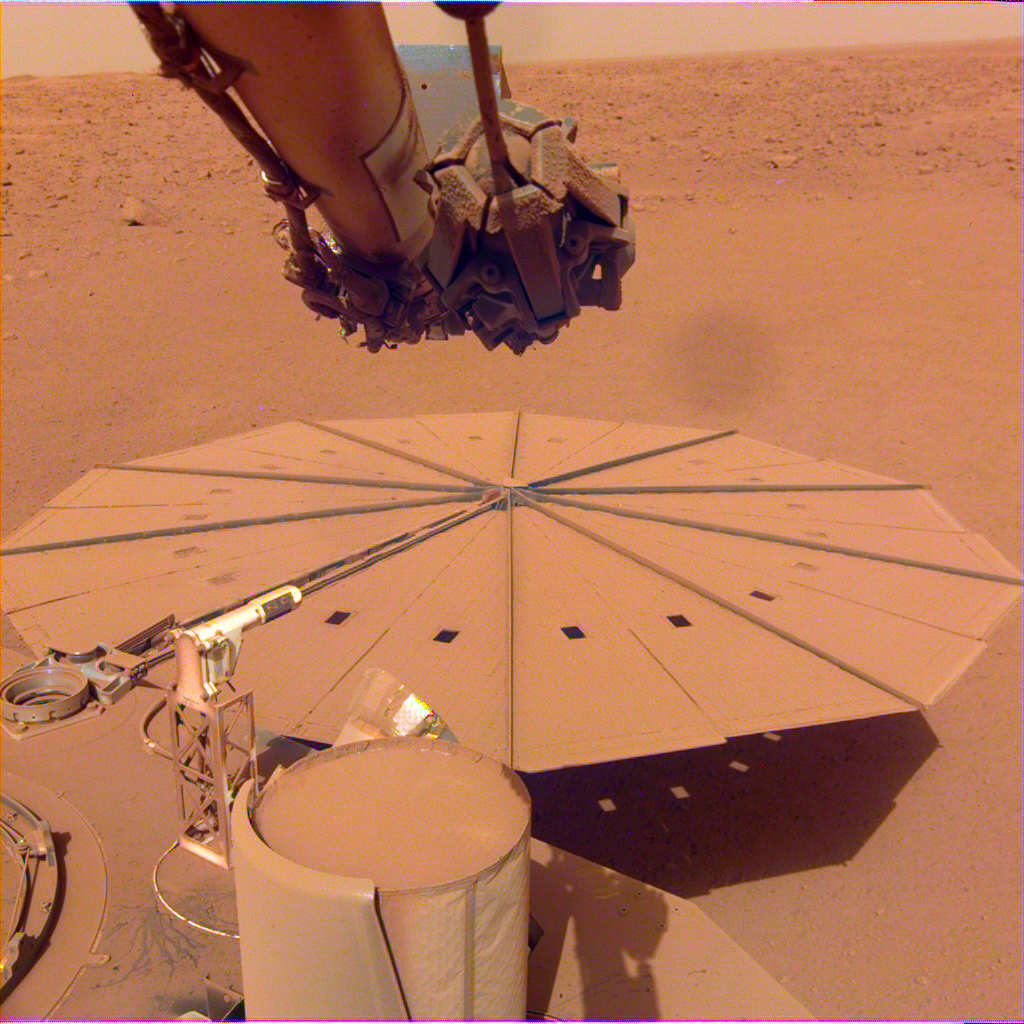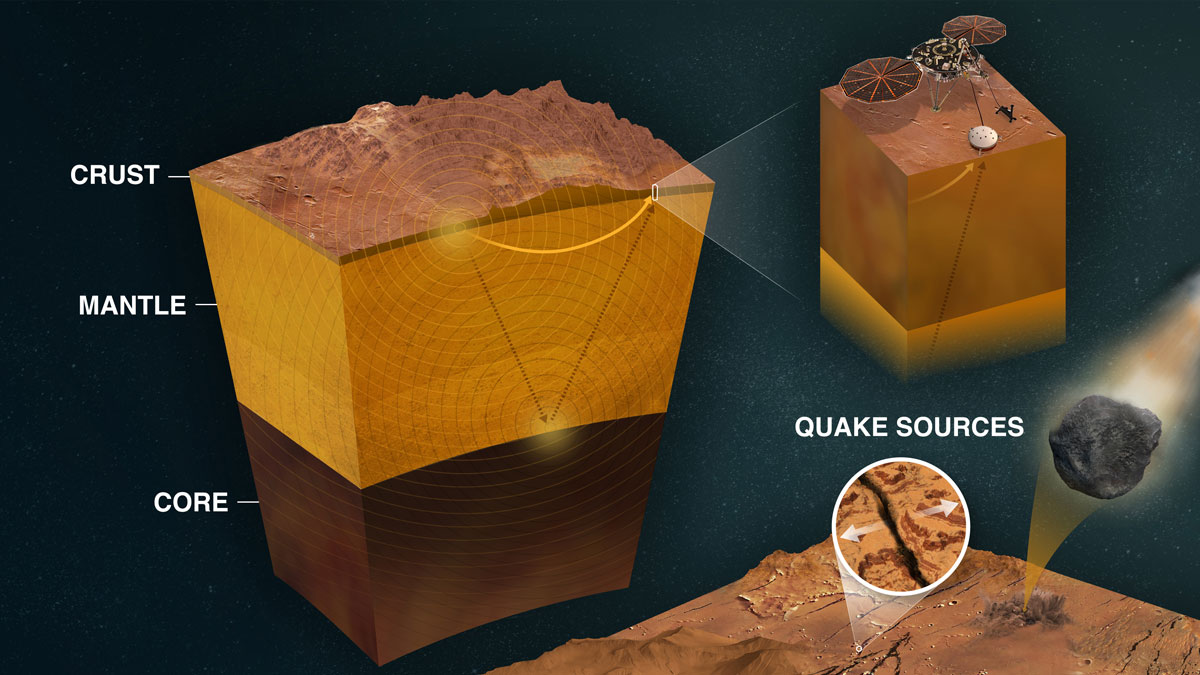The available power to ensure the operation of the NASA InSight lander is decreasing every day due to the heavy dustiness of its solar panels. NASA has revised the spacecraft’s mission schedule to maximize the efficient work that InSight can spend extra time on.
The lander was supposed to automatically shut down the seismometer – InSight’s latest operational scientific instrument – by the end of June to save energy. On the remnants of energy that dusty solar panels can produce, the device can last until December.

Now the team plans to program the lander so that the seismometer can work longer. Perhaps the engineers will be able to make it work until the end of August or even until the beginning of September. This will drain the device’s batteries faster and cause InSight to be completely discharged. But this may allow the seismometer to detect additional marsquakes, which is more valuable for science.

“InSight hasn’t finished exploring Mars yet. We are going to use its instruments to the last for the sake of science, before the lander completes its mission forever,” said Lori Glaze, director of NASA’s Planetary Sciences Department.
InSight’s achievements in four years
The InSight lander (Interior Exploration using Seismic Investigations, Geodesy and Heat Transport) is on an extended mission after achieving its main scientific goals. Since landing on Mars in 2018, the spacecraft has recorded more than 1,300 tremors. This information allowed scientists to measure the depth and composition of the planetary crust, mantle and core of Mars. With the help of other instruments, InSight recorded valuable weather data, examined the soil under the lander and studied the remnants of the ancient magnetic field of Mars.

All instruments except the seismometer were turned off. As in other spacecraft, InSight has a fault protection system that automatically launches “safe mode” in threatening situations and disables all functions except vital ones. Now the low power and temperature makes the device work on the edge of its capabilities and can trigger a safe mode at any time.

To keep the seismometer running for as long as possible, the mission team is sacrificing InSight’s fault protection system. Although this will allow it to work longer, it leaves the lander unprotected from sudden, unexpected events, which jeopardizes its existence. The team deliberately took risks for the sake of science.
Recall that earlier InSight made the final selfie.
Follow us on Twitter to get the most interesting space news in time
https://twitter.com/ust_magazine

